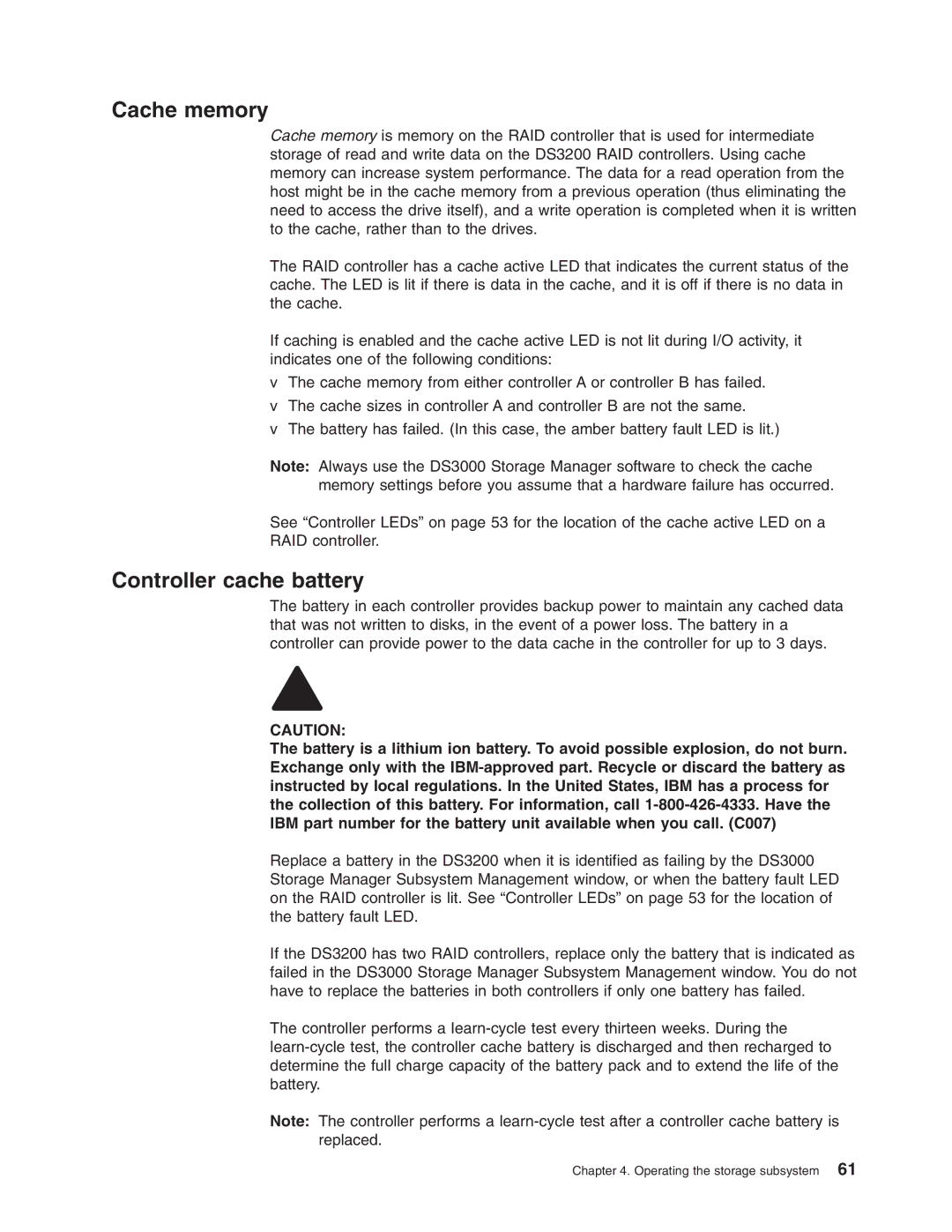Cache memory
Cache memory is memory on the RAID controller that is used for intermediate storage of read and write data on the DS3200 RAID controllers. Using cache memory can increase system performance. The data for a read operation from the host might be in the cache memory from a previous operation (thus eliminating the need to access the drive itself), and a write operation is completed when it is written to the cache, rather than to the drives.
The RAID controller has a cache active LED that indicates the current status of the cache. The LED is lit if there is data in the cache, and it is off if there is no data in the cache.
If caching is enabled and the cache active LED is not lit during I/O activity, it indicates one of the following conditions:
vThe cache memory from either controller A or controller B has failed.
vThe cache sizes in controller A and controller B are not the same.
vThe battery has failed. (In this case, the amber battery fault LED is lit.)
Note: Always use the DS3000 Storage Manager software to check the cache memory settings before you assume that a hardware failure has occurred.
See “Controller LEDs” on page 53 for the location of the cache active LED on a
RAID controller.
Controller cache battery
The battery in each controller provides backup power to maintain any cached data that was not written to disks, in the event of a power loss. The battery in a controller can provide power to the data cache in the controller for up to 3 days.
CAUTION:
The battery is a lithium ion battery. To avoid possible explosion, do not burn. Exchange only with the
Replace a battery in the DS3200 when it is identified as failing by the DS3000 Storage Manager Subsystem Management window, or when the battery fault LED on the RAID controller is lit. See “Controller LEDs” on page 53 for the location of the battery fault LED.
If the DS3200 has two RAID controllers, replace only the battery that is indicated as failed in the DS3000 Storage Manager Subsystem Management window. You do not have to replace the batteries in both controllers if only one battery has failed.
The controller performs a
Note: The controller performs a
